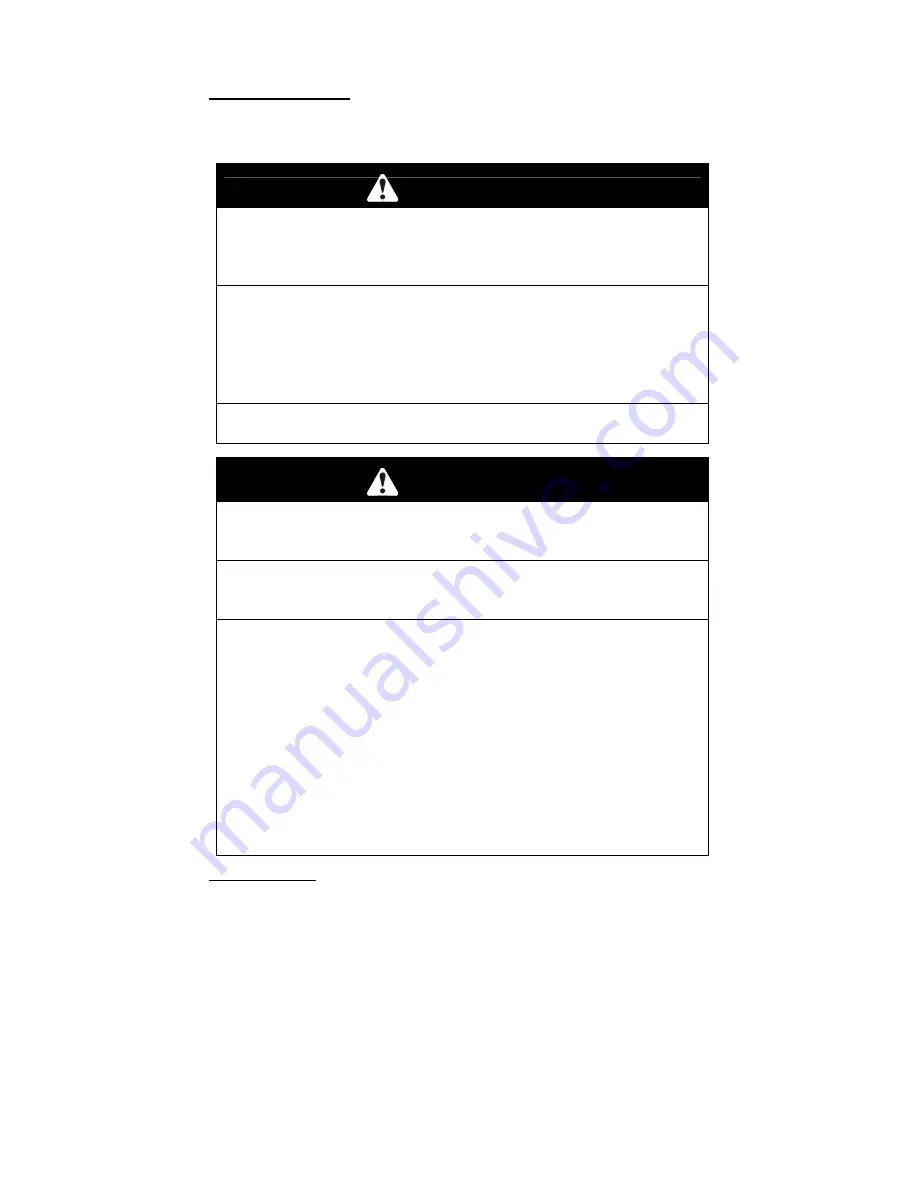
19
4.4
TRANSPORTING
4.4.1 Transporting a Unit: Use a heavy-duty trailer or truck to transport the machine. Lock
brake and block wheels. Securely fasten the machine to the trailer or truck with
straps, chains, cable, or ropes. Be sure that the trailer or truck has all necessary
lighting and marking as required by law. Secure a trailer with a safety chain.
CAUTION
POTENTIAL HAZARD
♦
This unit does not have proper turn signals, lights, reflective
markings, or a slow moving vehicle emblem. These items
are required to drive on a public street or roadway.
WHAT CAN HAPPEN
♦
Driving on a street or roadway without such equipment is
dangerous and can lead to accidents causing personal injury.
♦
Driving on a street or roadway without such equipment may
also be a violation of State laws and the operator may be
subject to traffic tickets and/or fines.
HOW TO AVOID THE HAZARD
♦
Do not drive a unit on a public street or roadway.
WARNING
POTENTIAL HAZARD
♦
Loading a unit on a trailer or truck increases the possibility of
backward tip-over.
WHAT CAN HAPPEN
♦
Backward tip-over of the unit could cause serious injury or
death.
HOW TO AVOID THE HAZARD
♦
Use extreme caution when operating a unit on a ramp.
♦
Use only a single, full width ramp; DO NOT use individual
ramps for each side of the unit.
♦
If individual ramps must be used, use enough ramps to
create an unbroken ramp surface wider than the unit.
♦
DO NOT exceed a 15
°
angle between ramp and ground or
between ramp and trailer or truck.
♦
Avoid sudden acceleration while driving unit up a ramp to
avoid tipping backward.
♦
Avoid sudden deceleration while backing unit down a ramp to
avoid tipping backward.
4.4.2
Loading a Unit:
If the unit is to be driven onto a truck or trailer with the
hopper full, always back the unit up the ramp. This will reduce the chance
of rearward tip up.
Use extreme caution when loading units on trailers or trucks.
One full width ramp that is wide enough to extend beyond the rear tires is
required instead of individual ramps for each side of the unit. The lower rear
section of the tractor frame extends back between the rear wheels and serves as
a stop for tipping backward. Having a full width ramp provides a surface for the
frame members to contact if the unit starts to tip backward. If it is not possible to
use one full width ramp, you must use enough individual ramps to simulate a full
width continuous ramp.









































